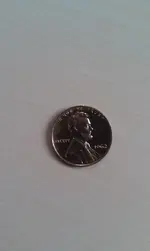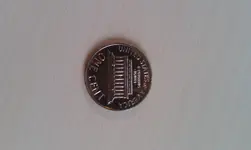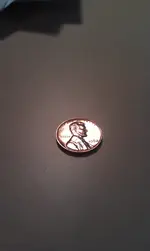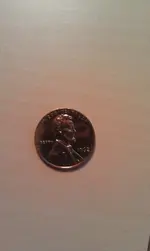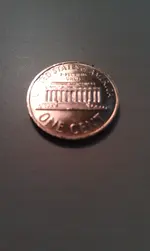You are using an out of date browser. It may not display this or other websites correctly.
You should upgrade or use an alternative browser.
You should upgrade or use an alternative browser.
Interesting Penny (Proof?)
- Thread starter fjer
- Start date
CoinFetcher
Bronze Member
- Joined
- Apr 29, 2012
- Messages
- 2,496
- Reaction score
- 3,303
- Golden Thread
- 1
- Location
- Left coast
- 🥇 Banner finds
- 1
- 🏆 Honorable Mentions:
- 1
- Detector(s) used
- Love to treasure hunt
- Primary Interest:
- All Treasure Hunting
Need to see the "fields" better - get some different pics/angles.
Cant quite tell....
Cant quite tell....
dustywallen
Sr. Member
- Joined
- May 18, 2012
- Messages
- 492
- Reaction score
- 99
- Golden Thread
- 0
- Location
- Kingsport, TN
- Detector(s) used
- Garrett Ace 250 and 350. Currently AT PRO.
It appears to be a SMS Lincoln Cent.
CoinFetcher
Bronze Member
- Joined
- Apr 29, 2012
- Messages
- 2,496
- Reaction score
- 3,303
- Golden Thread
- 1
- Location
- Left coast
- 🥇 Banner finds
- 1
- 🏆 Honorable Mentions:
- 1
- Detector(s) used
- Love to treasure hunt
- Primary Interest:
- All Treasure Hunting
I am unfamiliar with the 62 SMS - I thought they had mint sets, and then a proof set that year.
My cursory Googling shows that.
My cursory Googling shows that.
Diver_Down
Silver Member
There are some surprising answers from posters that know the difference. Special Mint Sets were issued 65, 66, 67. Obviously the coin pictured is a '62-P. Now, the question regarding seeing the fields isn't going to give any clues regarding the presence of Cameo/non-cameo surfaces. Proofs at that time didn't have frosted devices and mirror fields (not all - very few had a cameo effect and sell for high numismatic premiums over other proofs). Proofs did receive special handling at the mint and consequently there are clues (sometimes) that are left behind due to this handling. The dies were polished by hand at the time for proofs. Business strikes didn't not receive the special treatment. As a result of the hand polishing, there was often lint left behind on the die. The presence of lint marks on early proofs are sometimes the only way to tell the difference from business strikes minted in Philly.
dustywallen
Sr. Member
- Joined
- May 18, 2012
- Messages
- 492
- Reaction score
- 99
- Golden Thread
- 0
- Location
- Kingsport, TN
- Detector(s) used
- Garrett Ace 250 and 350. Currently AT PRO.
There are some surprising answers from posters that know the difference. Special Mint Sets were issued 65, 66, 67. Obviously the coin pictured is a '62-P. Now, the question regarding seeing the fields isn't going to give any clues regarding the presence of Cameo/non-cameo surfaces. Proofs at that time didn't have frosted devices and mirror fields (not all - very few had a cameo effect and sell for high numismatic premiums over other proofs). Proofs did receive special handling at the mint and consequently there are clues (sometimes) that are left behind due to this handling. The dies were polished by hand at the time for proofs. Business strikes didn't not receive the special treatment. As a result of the hand polishing, there was often lint left behind on the die. The presence of lint marks on early proofs are sometimes the only way to tell the difference from business strikes minted in Philly.
Sorry. Was carding SMS Lincoln's at that moment. It does appear to be a proof. Lol
fjer
Jr. Member
- Joined
- Aug 7, 2012
- Messages
- 92
- Reaction score
- 16
- Golden Thread
- 0
- Primary Interest:
- All Treasure Hunting
- #10
Thread Owner
There are some surprising answers from posters that know the difference. Special Mint Sets were issued 65, 66, 67. Obviously the coin pictured is a '62-P. Now, the question regarding seeing the fields isn't going to give any clues regarding the presence of Cameo/non-cameo surfaces. Proofs at that time didn't have frosted devices and mirror fields (not all - very few had a cameo effect and sell for high numismatic premiums over other proofs). Proofs did receive special handling at the mint and consequently there are clues (sometimes) that are left behind due to this handling. The dies were polished by hand at the time for proofs. Business strikes didn't not receive the special treatment. As a result of the hand polishing, there was often lint left behind on the die. The presence of lint marks on early proofs are sometimes the only way to tell the difference from business strikes minted in Philly.
Sorry. Was carding SMS Lincoln's at that moment. It does appear to be a proof. Lol
Thanks for the info, guys. Glad to see my initial thought was correct (my first proof penny!).
Similar threads
- Replies
- 6
- Views
- 313
Users who are viewing this thread
Total: 1 (members: 0, guests: 1)

